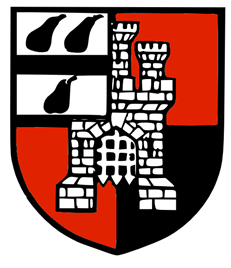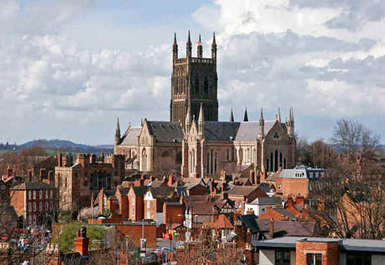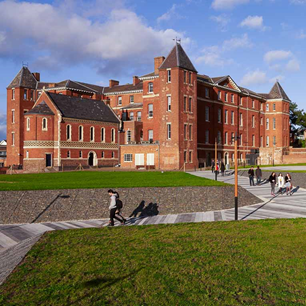
University of Worcester
A Brief History of Worcester
Worcester is a Cathedral City and the county town of Worcestershire in the West Midlands of England. The city was founded by the Romans about 50AD. It soon was a flourishing little town with many craftsmen. Later, an iron industry was developed. After the Romans left in 407AD, the town was probably abandoned.

However, by the mid-7th century the Saxons had started a new settlement by a ford in the River Severn. The Saxons called a Roman settlement a ceaster. They called this one Weogoran ceaster. Weorgoran means people of the winding river. In time, the name changed to Worcester.
In Medieval Worcester, there was a weekly market and after 1218 an annual fair. The Normans built a wooden castle in Worcester. In the 12th century it was rebuilt in stone. In the early 13th century stone walls were built around Worcester. The main industry was making woollen cloth. A grammar school, run by the church, was established.
Worcester continued to grow, and in the 17th century a suburb grew north of the town.
During the 19th century conditions in Worcester improved. In this century, Worcestershire sauce, frequently shortened to Worcester sauce, was created by the city’s chemists John Wheeley Lea and William Henry Perrins resulting in the famous Lea & Perrins business. The exact recipe is kept a secret.

Education
The University of Worcester, which is located in the city itself, is home to the National Pollen and Aerobiology Research Unit and five other national research centres.
The university is a British public university, and it has a history dating back to 1946. Worcester is the only university serving the English counties of Worcestershire and Herefordshire. The university is well known for its teaching degrees, and was one of the most improved universities for research in the Research Excellence Framework 2014, climbing 32 places in the Research Fortnight rankings. Researchers at Worcester were recognised as carrying out world-leading work in history, art and design, health, education, biological science, psychology, sport, geography, archaeology and environmental studies, and English language and literature.

Since 2006, the number of people applying to study at the university has more than doubled – a rate of growth much higher than the national average.
Worcester has become so popular because the University has:
- Highly relevant, very professional courses
- Excellent, inspiring teaching
- Truly friendly, inclusive approach with excellent student support
- Outstanding record of graduate employment
- Beautiful home in historic Worcester
The culture and outlook of the university means staff listen very carefully to what students say about their studies and university life generally. The courses and facilities are continually improved to take advantage of the very latest thinking, technology, evidence and research.
The community spirit at Worcester is renowned. Staff and students are proud to be working and studying at the University. If you apply to study at Worcester, and are selected, you will be warmly encouraged to become part of a thriving social, cultural and sporting environment. At the same time, you will gain the intellectual and practical skills and qualifications you need to succeed in today’s world.
Since 2005, the university has expanded greatly and acquired many new sites across the city of Worcester. Its long term strategy includes building joint community and university facilities, and expanding to a third campus.
The university’s main campus is known as St John’s and is the main base for all courses, support departments and academic institutes, except those related to business, computing, marketing or management. The site contains Halls of Residence with over 800 rooms, a sports centre, sports pitches, facilities for training nurses, midwives, and physician associates, a commercial standard digital arts centre and motion performance centre
This is the second campus and is the home of the Worcester Business School. The campus opened in September 2010 on the site of the former Worcester Royal Infirmary in Infirmary Walk. The buildings of the original infirmary, which remain, are the work of the noted eighteenth-century architect Anthony Keck. A new Halls of Residence with accommodation for 250 students were completed on the site as well. All Worcester Business School courses are run here, including undergraduate and postgraduate courses. The Jenny Lind Chapel has been refurbished to its original state as has the Boardroom in which the British Medical Association was founded in 1832.
In addition, the University occupies a large site adjacent to the River Severn, now known as “Riverside”. This includes an Art Space and Exhibition building and a 2,000-seat capacity Sports Arena built as a new facility for sports.
The University plans to develop a third campus on the disused Grove Farm, a 190,000-square-metre piece of land 1.6 kilometres from St John’s campus.
The University of Worcester is a partner with IDP Education. IDP is a world leader in international student placement services and a proud co-owner of IELTS. It operates a large network of over 80 student offices in more than 30 countries, offering institutions an efficient and cost-effective way to reach potential students in multiple student source markets. IDP also partners with 600 leading institutions in five popular English-speaking countries.
For free information and study abroad application assistance, visit IDP Education offices at all ACE campuses.
